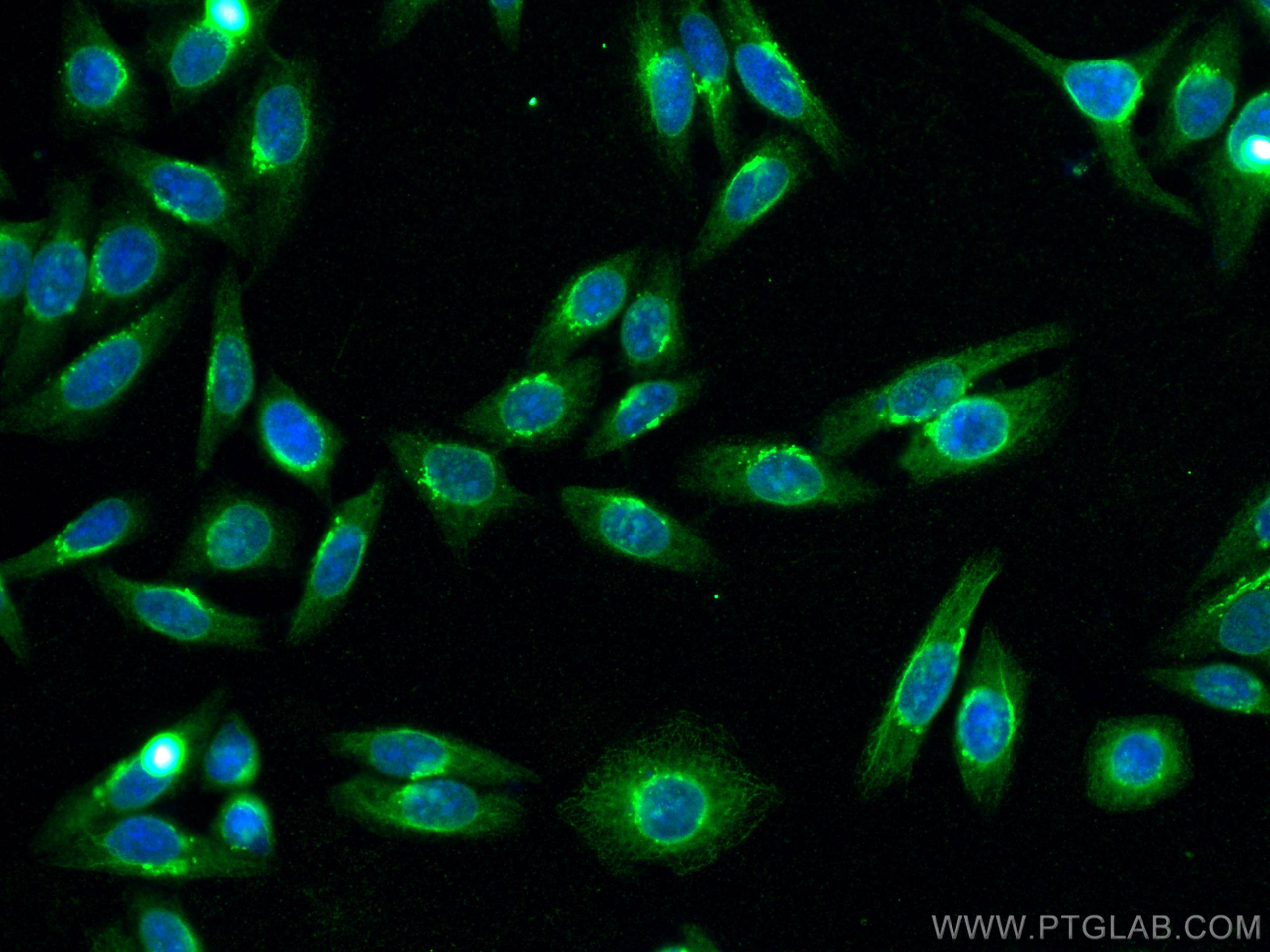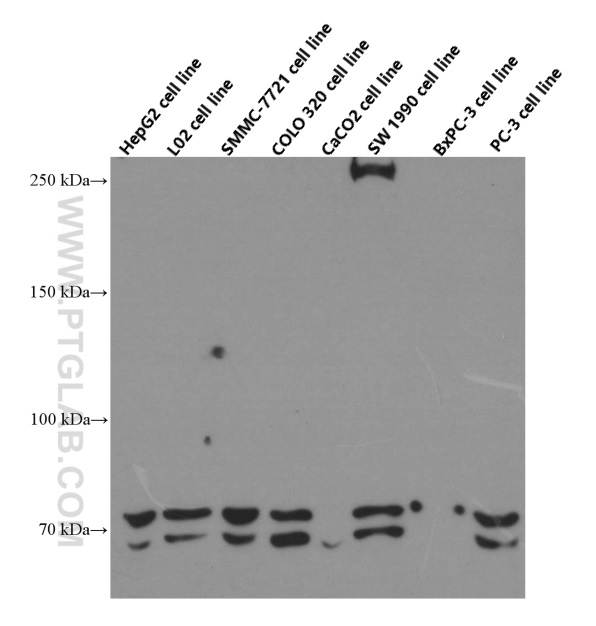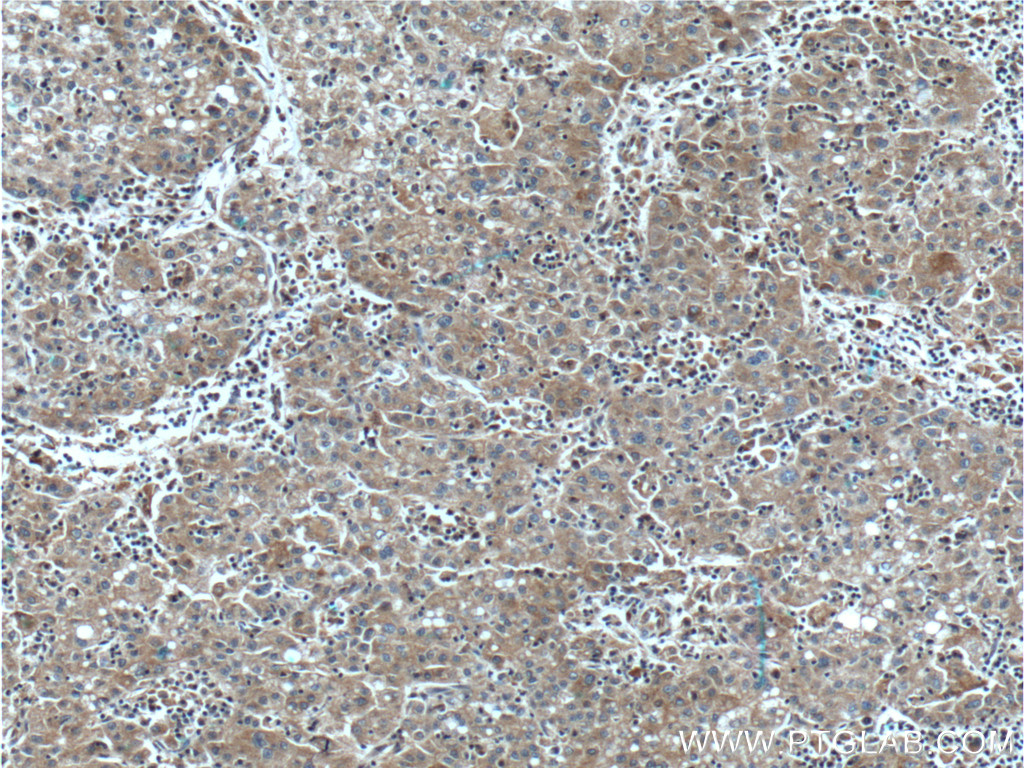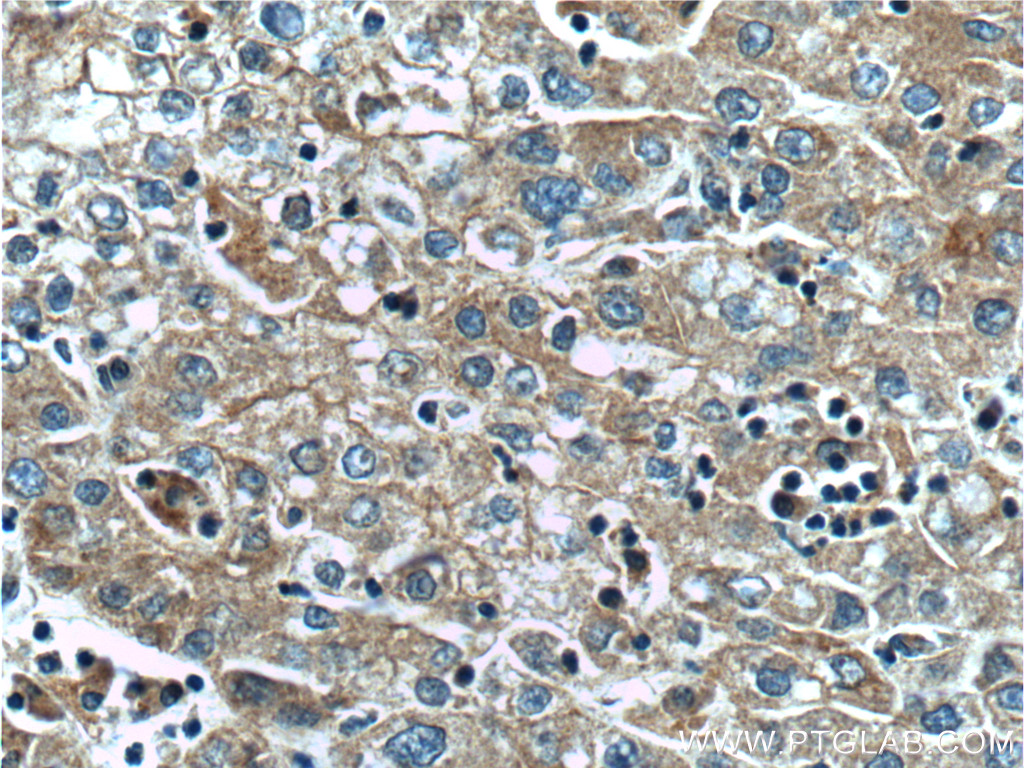验证数据展示
产品信息
66381-1-PBS targets SLCO1B3/OATP1B3 in WB, IHC, IF/ICC, Indirect ELISA applications and shows reactivity with human samples.
| 经测试应用 | WB, IHC, IF/ICC, Indirect ELISA Application Description |
| 经测试反应性 | human |
| 免疫原 | SLCO1B3/OATP1B3 fusion protein Ag19033 种属同源性预测 |
| 宿主/亚型 | Mouse / IgG1 |
| 抗体类别 | Monoclonal |
| 产品类型 | Antibody |
| 全称 | solute carrier organic anion transporter family, member 1B3 |
| 别名 | LST 2, LST 3TM13, LST2, LST3, OATP 8, OATP1B3, OATP8, Organic anion transporter 8, SLC21A8, SLCO1B3 |
| 计算分子量 | 702 aa, 77 kDa |
| 观测分子量 | 68-77 kDa |
| GenBank蛋白编号 | BC105597 |
| 基因名称 | SLCO1B3 |
| Gene ID (NCBI) | 28234 |
| RRID | AB_2881757 |
| 偶联类型 | Unconjugated |
| 形式 | Liquid |
| 纯化方式 | Protein G purification |
| UNIPROT ID | Q9NPD5 |
| 储存缓冲液 | PBS only , pH 7.3 |
| 储存条件 | Store at -80°C. The product is shipped with ice packs. Upon receipt, store it immediately at -80°C |
背景介绍
SLCO1B3, also known as OATP8 or OATP1B3, is a member of Organic Anion Transporting Polypeptides (OATPs) which are sodium-independent organic anion transporters mediating the uptake of a wide range of structurally diverse endogenous and exogenous compounds including bile acids, hormone conjugates, peptides, toxins, as well as a multitude of therapeutic drugs. SLCO1B3 is specifically expressed in liver under normal condition, while its expression has also been observed in cancer tissues like colon, prostate and pancreas. It corresponds to Oatp1b2 in mice, with the gene symbol Slco1b2. The mouse genome encodes only a single transporter gene in the OATP1B subfamily, because SLCO1B1 and SLCO1B3 arose in primates by gene duplication after divergence from rodents. The molecular mass of SLCO1B3 is highly dependent on the glycosylation modification (deglycosylated form of 65 kDa, fully-glycosylated form of 120 kDa).



